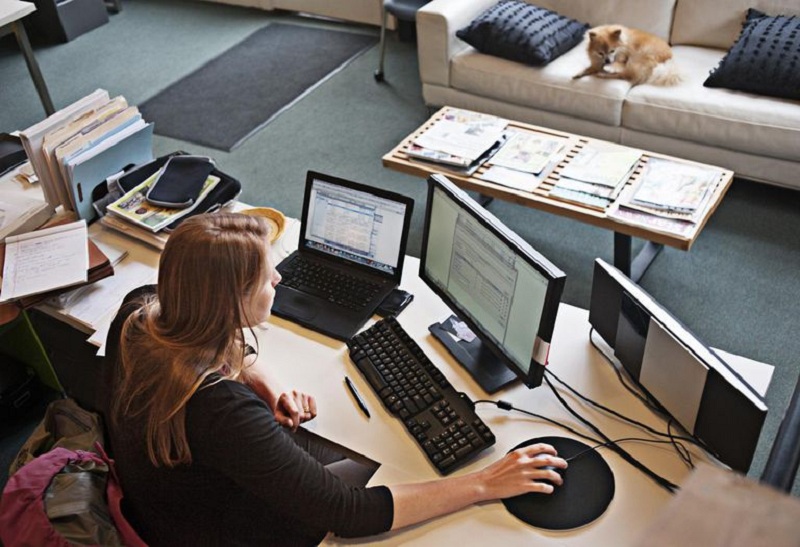According to Forbes contributor, Kenneth Rapoza, one in five Americans work from home. That’s about three million American professionals that never step foot in an office outside their home – 54 percent of them say they’re happier that way.
Whether it’s a self-employed individual or someone working a small accounting service or telecommuting for another company, more and more people are hanging up their work shirts, getting out of the “rat race,” and snuggling up to their computers.
But, with home offices comes another challenge – productivity. When you work for another company, and you work in an outside office, that company provides all of your necessities from computers to office furniture.
When you work at home, you might get a computer, but you also might just get computer access to the network at your company. In all likelihood, you’re on your own when it comes to furnishing your office.
Get Ergonomic Furniture
One of the best things you can do is buy ergonomic furniture. Let’s say you have one of those L-shaped desks that makes life so much easier. What do you do about a chair? Often times, these desks aren’t movable or adjustable, so you’re stuck with the height from the factory. You have to adjust yourself to the desk.
Thankfully, ergonomic chairs make this almost a non-issue. They conform to the contours of your back, give good lumbar support, and do not encourage slouching. They also have generous cushions so that you don’t get sore sitting all day long.
Of course, you can also ditch the normal desk for a stand-up one. Stand-up desks allow you to move more freely around the office, and they also eliminate the need for a chair. As long as you’re willing to commit to improving your posture, they’re touted as being healthier for you than sitting all day.
Use Idea Boards
When you work from home, getting ideas can be hard. You don’t always have a good view from your spare bedroom, or whatever room you’re using for your office. Idea boards can help you stay focused when you feel your mind drift.
Keep a whiteboard handy, pinned up on the wall. To get your day started, start writing down all of the tasks you need to do today. Periodically, as ideas come up in your head, don’t let them distract you for too long. Get them out of your head. Write them down. Then, you can continue on with your work.
If you work in a creative field, an idea board is almost a necessity. Doodling or just writing down ideas around a central “bubble” or theme can turn up new ways to tackle an existing project.
For example, if you’re working as a web designer, you might have some idea about how you want to design a client’s site. But the client has one design request that you must design around. Using your idea board, you would place this front and center on the board. Then, you would try to come up with other design elements that complimented the client’s request. Rather than “experimenting” with code, the idea board lets you figure things out conceptually and with images (or even text) before you go through all of the trouble of coding it.
